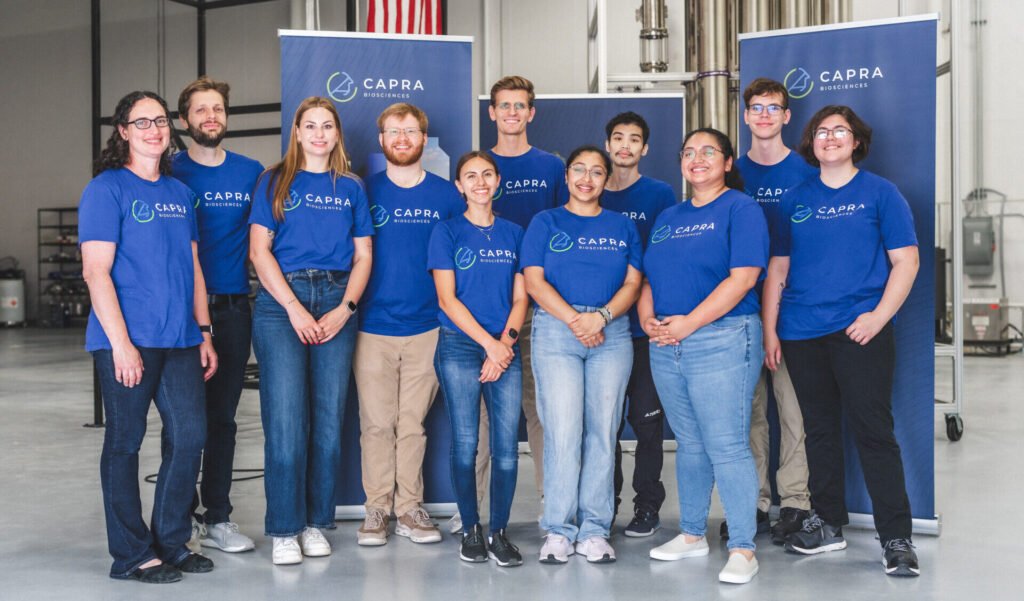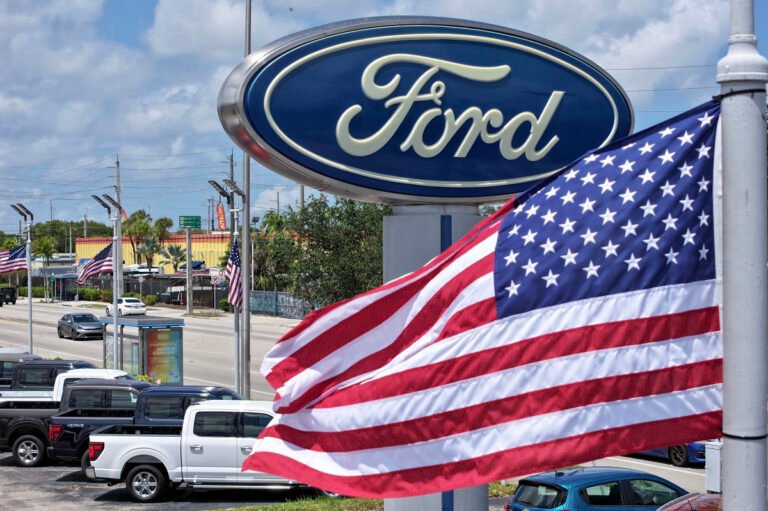
Virginia-based startup Capra Biosciences has developed a novel method of producing retinol (a form of vitamin A) in a biomanufacturing process it claims could compete with petrochemical-based production.
While most retinol sold in the US is produced via chemical synthesis in China and Europe, some firms have developed bio-based approaches, including DSM Firmenich (which went public about its work in this space after acquiring the tech from Amyris), and Conagen, which converts its bioretinol into more stable esters, although the tech is still in the development stage.
However, cost structures remain challenging if you want to capture a decent slice of the $1.5 billion global retinol market with a bio-based offering, says Capra Biosciences CTO Dr. Andrew Magyar, who initially started looking at the lubricants market with cofounder Dr. Elizabeth Onderko but switched the focus to higher value, lower-inclusion ingredients.
“We soon realized that the scale that you need to be at to be cost competitive with lubricants was way too big whereas retinol is used in pretty small concentrations in markets such as personal care and it’s much higher value.”
That said, even in this market, he says, most potential customers are not willing to pay a green premium, “so you have to have something that will be able to compete on price.”
Solvent tolerant microbes
Against this backdrop, Capra’s approach has a few things working in its favor, says Magyar, who secured funding to get Capra’s tech to pilot scale via a BioMADE Project Call with support from Schmidt Sciences.
First, its bacteria and yeast are efficient at producing retinol from a variety of industrial side streams from thin stillage (a co-product of ethanol production) and glycerol (a byproduct of biodiesel production), to brewers’ waste.
Second, Capra’s microbes are also tolerant to solvents such that they can be removed from the bioreactor, “washed” with solvents to extract the retinol, and then returned to the bioreactor where they will keep producing retinol, enabling a continuous production process, says Magyar.
“For a hydrophobic product like retinol that’s typically solid at room temperature, you’d typically have to harvest the cells and crush them [to release the retinol], whereas with our process, we contact the biology with organic solvents, remove the product, and the cells survive,” he explains.
“We also use an advanced nanofiltration process to further drive the efficiency of the downstream process, which can be 50% or more of the cost of a facility. So that really drives the economics to be more cost effective. We’ve also done a lot of work on the strain. What isn’t talked about enough [in biomanufacturing] is that you can simplify your downstream processing by doing more [upstream work] on strain engineering.”
Continuous fermentation process, modular design
As unwanted microbes that might disrupt the fermentation (a phenomenon that forces many firms into less efficient batch production) are either damaged by the solvents or cannot gain any purchase in the reactor because they don’t feed off the same feedstocks, contamination is not a big issue, meanwhile.
Finally, the bioreactor design, a series of six-inch-wide columns, enables a modular scale-out process rather than the typical scale-up process, meaning Capra’s system is easier to de-risk for large-scale production, says Magyar.
“We have modules that are around 1,000-liters in scale, and rather than scaling up to larger and larger reactors, we replicate these individual units.
“If you’re scaling up to bigger and bigger volume reactors, there’s always the risk of the unknown, whereas our modular approach allows us to have much more predictable scaling. It also allows for multi-product facilities where you can dynamically respond to product demand,” adds Magyar, who operates a 10,000 sq ft pilot plant in Sterling, Virginia.

Reliable sourcing
So what’s driving market interest in bio-based retinol?
“Different segments of the market are looking for different things,” says Magyar. “Consumers are still looking for bio-based, sustainable products, in the personal care space, where there’s a desire to have things that are more naturally produced.
“But what we’re hearing more generally from the big companies is that they are worried about supply chain disruptions and we’re offering the promise of a validated dedicated supply using a carbon source that can be readily sourced locally. If we can offer that and stay cost competitive, or perhaps even give them a lower price over time, that’s very attractive.”
As for the business model, he says, “We want to be making the chemicals and running the bioreactors, but there’s a lot of ways that we can do that in partnership through joint ventures or other relationships. We’re looking to have b2b sales with people that are already in the marketplace, that understand the market and its requirements, as the fastest path to market entry, because they already have established customer networks and know what it takes to get a product to market.”

Samples on the market this year
The plan is to expand production at the 10,000 square foot facility to get meaningful sample quantities of retinol on the market this year, he says.
“We’re hoping to build customer demand, get initial purchases and production out of the pilot facility, and use that to enable us to finance a larger scale facility,” adds Magyar, who is also developing a platform to produce active pharmaceutical ingredients, where “there is a big push for domestic onshoring.”
The “rule of thumb in biomanufacturing has been that to be economically viable, you have to go into bigger and bigger tanks, which means there are really long timelines to build out a facility,” says Magyar. Capra Biosciences’ model turns that on its head, he claims.
“What’s most exciting about our technology is the way that this modularity allows us to reshape manufacturing.”
The post Can bio-based vitamin A give its petrochemical-based counterpart a run for its money? Capra Biosciences weighs in appeared first on AgFunderNews.



